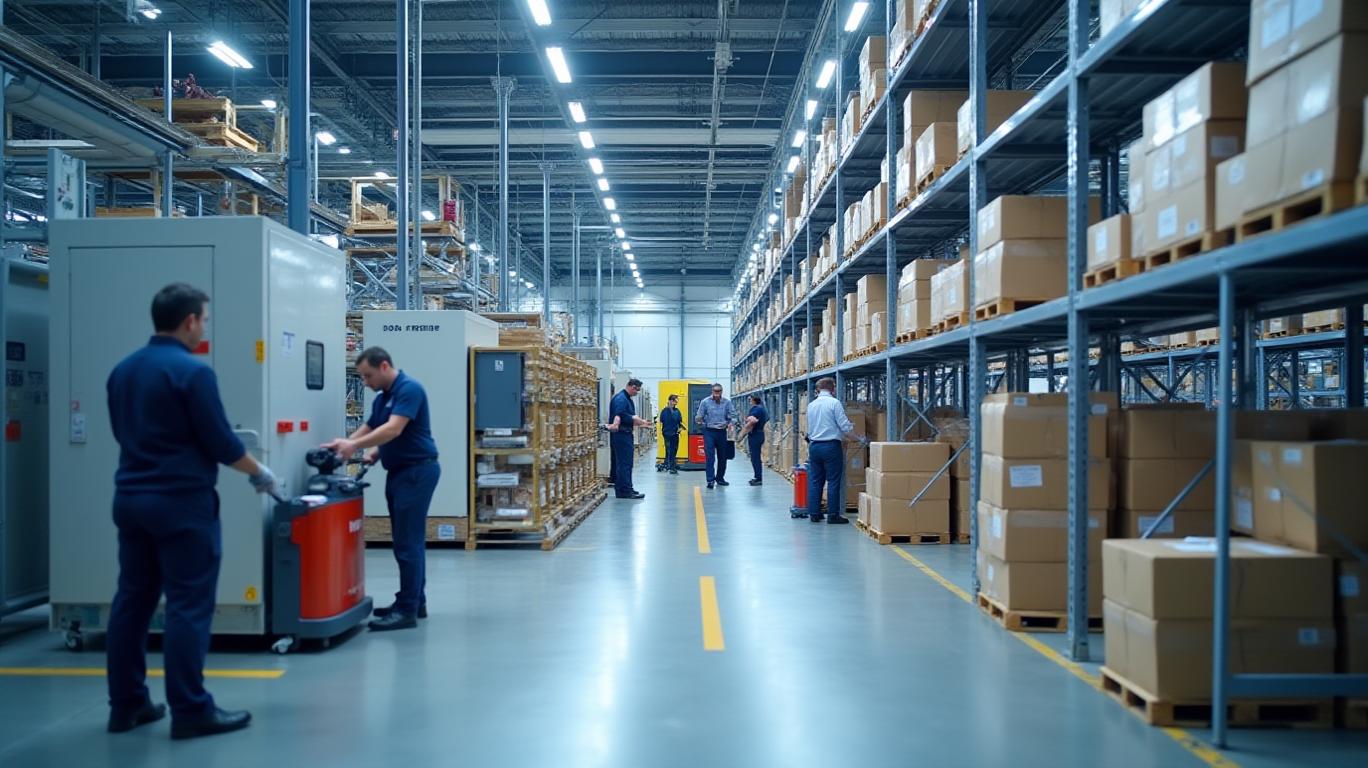KION GROUP (ETR:KGX): Dividend Boost and Margin Expansion Signal Turning Point?
The recent 6.3% surge in KION GROUP AG’s (ETR:KGX) stock over seven days in late April 2025 has reignited investor optimism about the company’s prospects. While the broader German market and machinery sector faced headwinds, KION’s rally reflects a mix of strategic moves—most notably a dividend increase—and improved financial metrics. Yet, the path forward remains fraught with challenges, from high debt levels to slowing revenue growth. Is this a sustainable turnaround, or a fleeting market reaction?

The Catalysts: Dividends and Margins
The immediate trigger for the stock’s jump was the announcement of a 17% dividend hike to €0.82 per share, the highest payout since 2020. Analysts noted the dividend’s solid earnings coverage, with 2024 EPS of €2.75 comfortably supporting the payout. Crucially, 2025 EPS forecasts of €1.50—though down sharply from prior expectations—still suggest a payout ratio of just 19%, implying ample room for further growth.
Yet, the dividend’s sustainability hinges on KION’s ability to stabilize earnings. The company’s 2024 results provided a glimpse of progress: despite flat revenue of €11.5 billion, adjusted EBIT rose 16% to €917 million, driven by margin expansion in both core segments. The Industrial Trucks & Services division, which accounts for 75% of revenue, saw service business growth offsetting weak equipment sales, while the Supply Chain Solutions division improved its margin to 3.8%, up from 1.5% in 2023.
The Crossroads: Growth vs. Debt
Despite these positives, KION faces significant headwinds. The company’s debt-to-equity ratio of 62% remains a liability, especially as analysts project revenue to shrink by 3.5% annually through 2025—lagging behind the industry’s 4.8% growth rate. The beta of 1.89 underscores its sensitivity to market volatility, a risk amplified by its current trading price of €35.60, 41% below its estimated fair value of €61.00.
The earnings trajectory is particularly contentious. While 2025 EPS forecasts of €1.50 represent a 59.4% year-on-year decline from 2024’s €3.65 (revised downward), the consensus price target of €46.97 suggests analysts believe the dividend boost and valuation discount outweigh near-term earnings concerns. However, the historical EPS decline of 6.6% annually over five years and a dividend cut in the past decade temper optimism about long-term stability.
Valuation and Risks
KION’s free cash flow of €702 million in 2024 offers a lifeline, but its capital-intensive business model requires sustained reinvestment. Strategic moves, such as AI-driven solutions (e.g., the AI Control Tower) and sustainability initiatives (validated climate targets), aim to bolster competitiveness. Yet, execution risks remain, particularly as peers like Toyota Material Handling and Crown Equipment intensify competition.
Conclusion: A Fragile Turning Point?
KION GROUP’s recent performance hints at a potential inflection point, driven by margin discipline and shareholder-friendly policies. The dividend hike and 2024 margin expansion to 8.0% (up from 6.9%) suggest management’s focus on profitability is paying off. However, the debt overhang, sluggish revenue growth forecasts, and volatile stock performance (9.3% weekly volatility vs. 6.3% for the market) justify caution.
Investors must weigh the 41% undervaluation against structural risks. If KION can stabilize revenue and reduce debt—while leveraging its strong cash flow—the stock could rebound sharply. But without a convincing growth catalyst, the dividend alone may not be enough to sustain investor confidence. For now, the rally appears more a reaction to near-term positives than a definitive turnaround.
In sum, KION GROUP’s trajectory remains a balancing act. The dividend boost and margin gains are encouraging, but the path to sustained growth—and a valuation recovery—depends on addressing its debt and revenue stagnation. For investors, this is a high-risk, high-reward scenario, best approached with a long-term lens and a tolerance for volatility.










